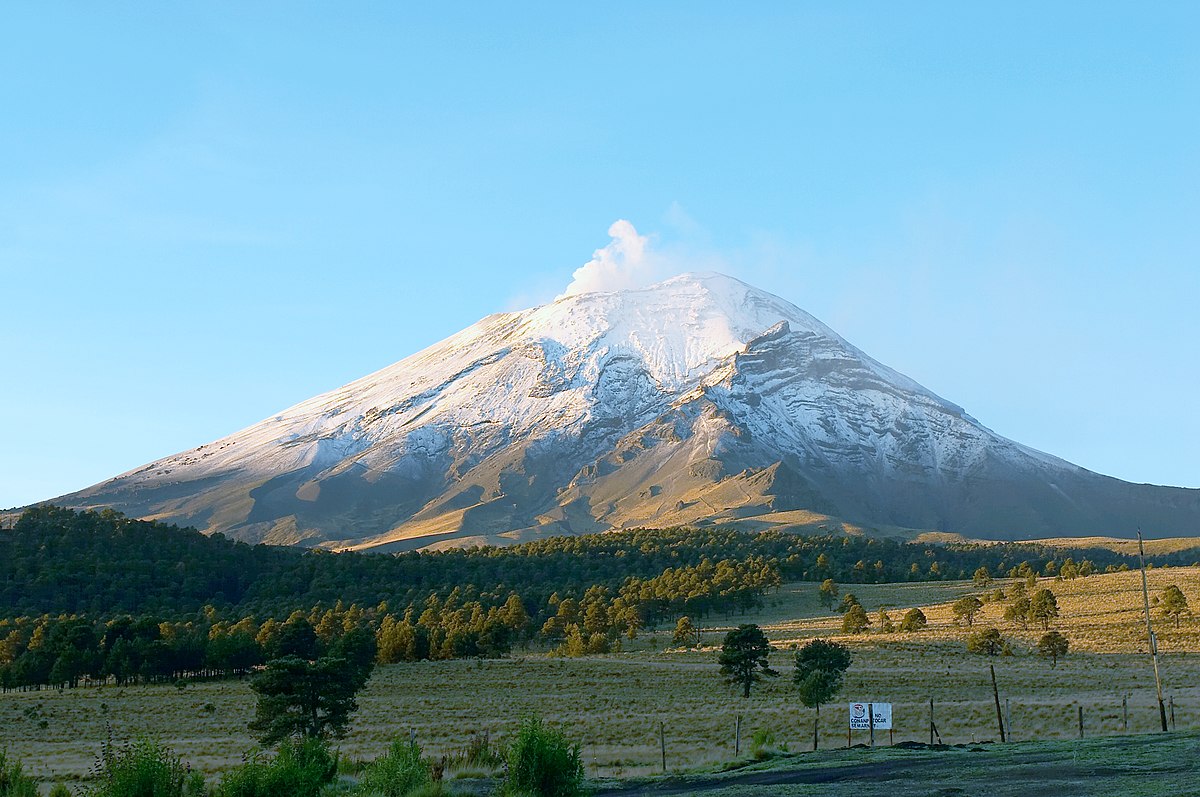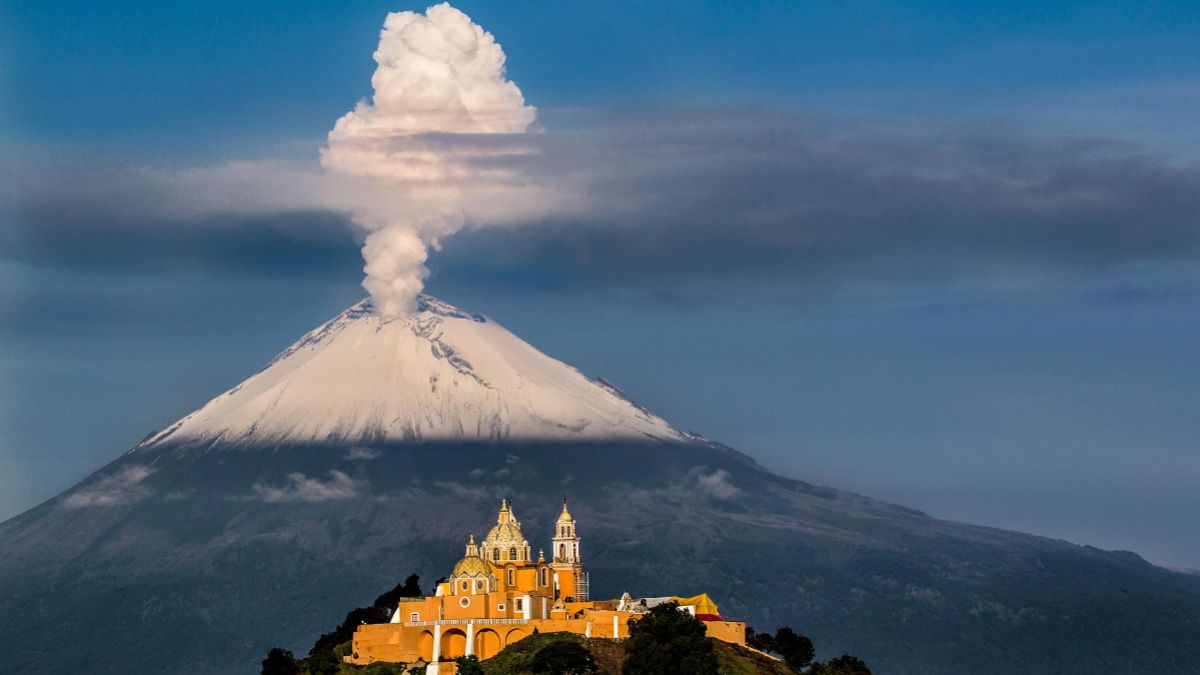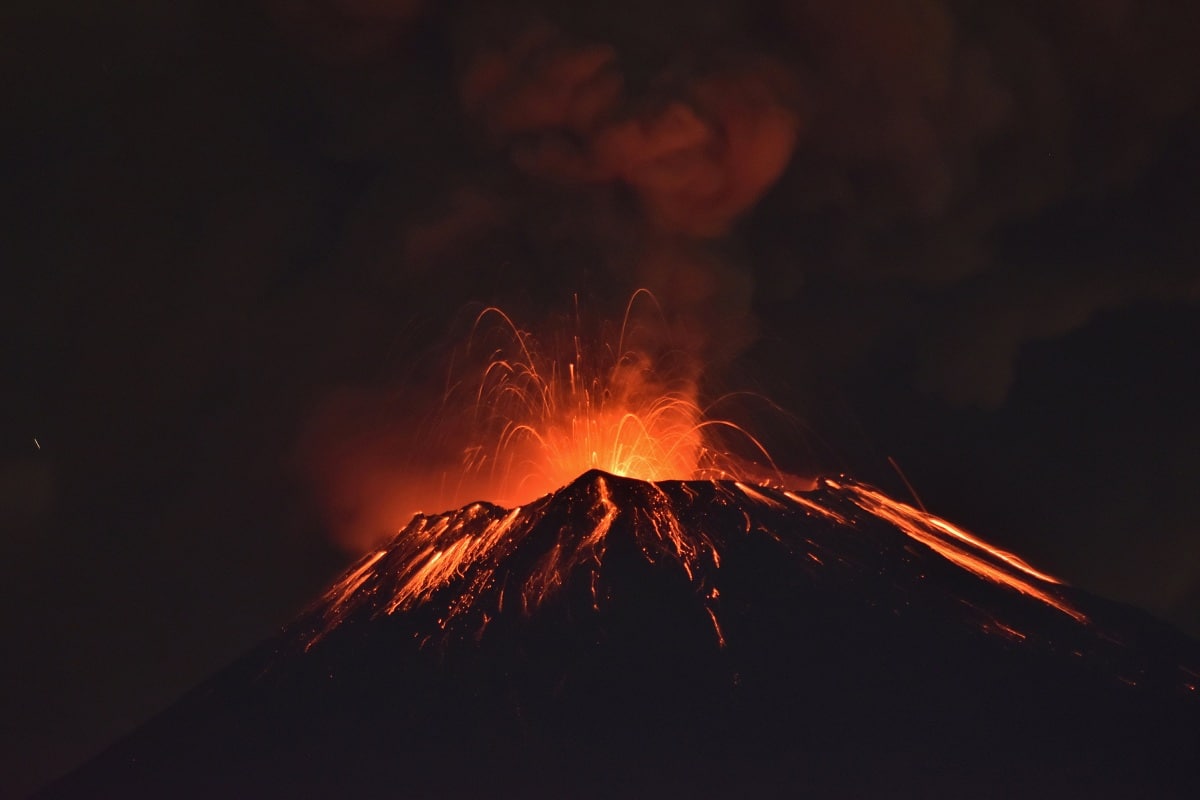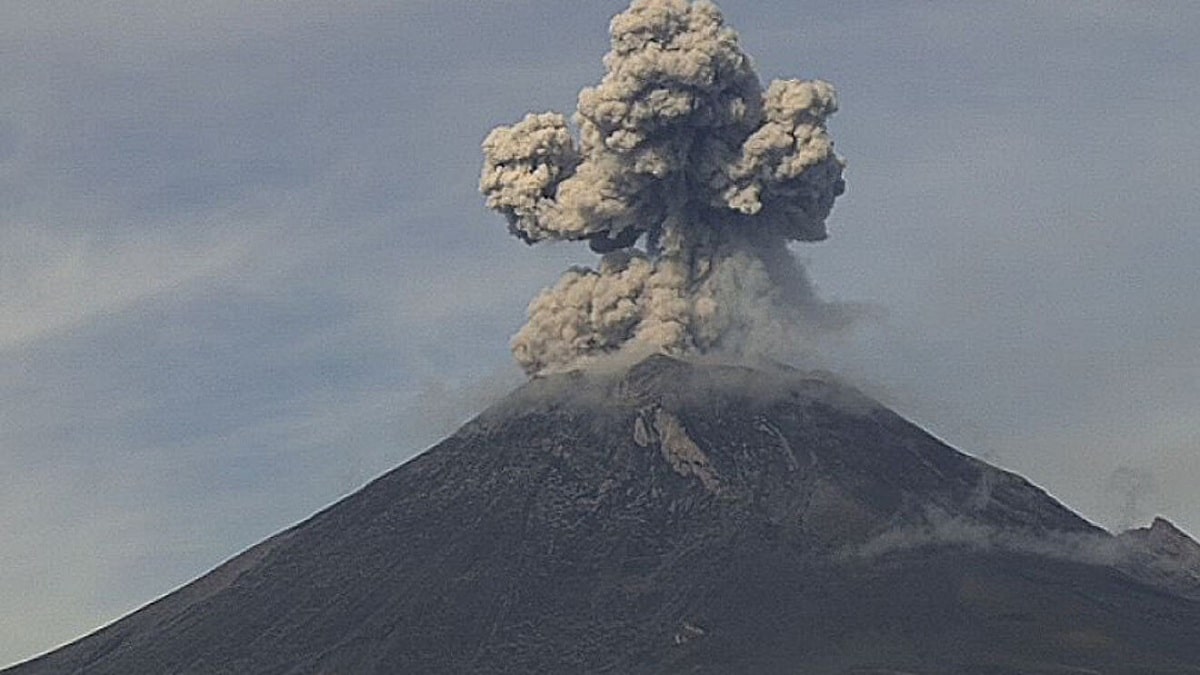
Due to its Nahuatl origin, its name means "smoking mountain", due to its height it is the highest peak in Mexico after Pico de Orizaba, and due to its proximity to several towns, Mexico is considered one of the most dangerous volcanoes in the world. . He is also known as "Don Goyo" or simply "Popo". The Popocatepetl volcano It is a stratovolcano or composite volcano. Described as an active volcano, it is actually the most active volcano in Mexico. It is located in the states of Puebla, Morelos and Mexico, south of Mexico City, in a geographical province called New Volcanic Axis or Transversal Volcanic Axis, a chain of volcanoes that includes Ixtacihuatl, Paricutín and Nevada de Toluca, among others.
In this article we are going to tell you everything you need to know about the Popocatépetl volcano, its origin, eruptions and danger.
Key features

The appearance is almost symmetrical, covering an area of 283192.53 hectares and an altitude of 5426 meters. It has an oval-shaped crater with steep walls, 150 meters deep from the lower lip, a diameter greater than 900 meters and a total width of 400 x 600 meters.
The landscape of the area around Popocatepetl contains various types of ecosystems with a rich diversity of flora and fauna. There are mixed forests of pines, oaks and holm oaks, where up to 1.000 species of plants coexist. In the cone, mainly near the mouth, there are glaciers that have shrunk in recent years.
Formation of the Popocatepetl volcano
Popocatépetl is a geologically young volcano. It is believed to be around 730.000 years old and is the remnant of an ancient volcanic collapse. Its history begins with the formation of the Nexpayantla Volcano through the discharge of lava flows of andesite and dacite. Years later, the volcano collapsed, creating a caldera, a wide, deep depression with a magma chamber below.
Then came the cone of a new volcano, Ventorillo, but it collapsed about 23.000 years ago. Later, the El Fraile volcano began to appear, but after a while it also collapsed due to a strong eruption, after which the southern side of the cone was destroyed.
Modern Popocatépetl originated in the Late Pleistocene-Holocene, after the collapse of El Fraile. The Don Goyo cone gradually grew to a considerable size, but produced a powerful eruption that collapsed one side of the cone and produced a large amount of sediment that covered the surface. At least 4 later avalanches contributed to the modern cone.
Popocatepetl eruptions

It is an andesite-dacite stratovolcano. Since the mid-Holocene, there have been 3 major Plinian eruptions; the last one occurred in the year 800 AD C. It is estimated that it was active for more than half a million years, and its eruptive history is quite extensive.
The Aztecs recorded many events in their code, such as the one that occurred in the year 1509 AD, embodied in Telleriano-Remensis and the Vatican Codex. Volcanic activity began in 1519 and peaked in 1530. Between 1539 and 1549 there were moderate explosive eruptions that released pumice from the Earth's interior.
During the 1947th century, there have been a few moderate to intense eruptions, the last being the most memorable in 1994. In XNUMX, exhaled gas and ash forced nearby residents to evacuate their homes for safety. This is an essential point for the more than 25 million people who live within a radius of 100 kilometers from the crater, mainly for the almost 325 people settled within a radius of 5 kilometers.
In 2000, the volcano had its biggest eruption in 1200 years. On December 18 and 19 of that year, it spewed large amounts of incandescent material in three episodes, and on December 24, it spewed debris about 2,5 kilometers long and produced an ash plume about 5 kilometers high. Don Goyo is as active as ever, with occasional exhalations and moderate outbursts.
Visits

One of the best places to observe the volcano is Paso de Cortés, a pass at 3600 meters high that extends between the feet of the so-called Iztaccíhuatl and Popocatépetl in the municipality of Amecameca. The area was named after the conquistador Hernán Cortés, who according to history passed through there when he arrived in Tenochtitlán.
Tickets can be purchased to enter Izta-Popo National Park, and on clear days you can see La Malinche and Pico de Orizaba in the distance. Paso de Cortés is also the starting point to reach La Joya (3950 masl), from where climbers depart for the Iztaccíhuatl volcano. The entrance to the Izta-Popo National Park is 30.50 MXN.
Legend of the Popocatépetl volcano
This is the landscape that beautifies one of the largest cities in the world: Mexico City, home to two of the highest volcanoes in the country: Iztaccíhuatl and Popocatepetl.
The Mexican writer and journalist Carlos Villa Roiz tells in his book Popocatépetl that in childhood, when the Aztecs arrived in the valleys of Mexico, the great Tenochtitlan was born, and the beautiful princess Mixtli was the daughter of Tizoc. Mexico). Mixtli is a beautiful woman sought after by many men, including Axooxco, the ruthless bloodthirsty who announced the Hand of the Princess. But the girl's heart belongs to one of the most handsome warriors in the village, a warrior named Popoka. Both expressed boundless love.
Making a pact with the princess's father, Popoca fought to win the title of Eagle Knight, thus giving Mistry's hand to Aksoko. He takes the promise of Mistry and others seriously. When Popoca got involved, Mistry watched his fighters lose and die in battle.
Frustrated by grief over the death of her loved one, Mixtli took his own life without knowing that Popoca would return triumphant, before the impossibility of his love. Popoca fought against hundreds of soldiers for years. Some time later, Popoka returned victorious to find his beloved dead. The victorious warrior now has victory, wealth, and power, but he has no love.
The samurai then took the corpse of the princess and ordered a large tomb to be built on the huge mound facing the sun, and ten hills were piled on which to place the corpse lying in the tomb.
I hope that with this information you can learn more about the Popocatépetl volcano and its characteristics.